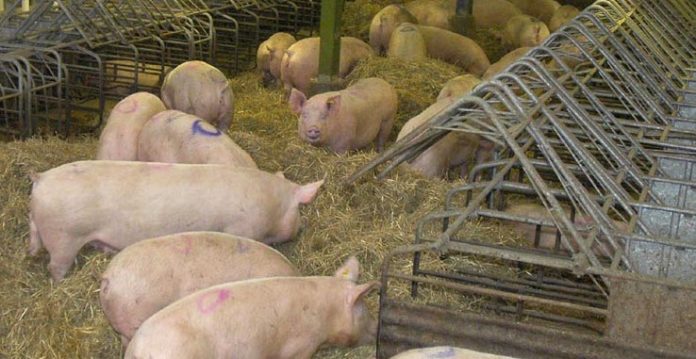A researcher at Walter Reed Army Institute for Research holds a sample being tested for superbugs.
Scientists from The Ohio State University found bacteria resistant to the carbapenem class of antibiotics in the piglet nurseries of a pig farm.
While carbapenems are illegal to give livestock, the researchers suggest a related antibiotic that is approved for agricultural use might be behind their findings.
And even though the resistant bacteria weren’t found in older pigs destined for slaughter, “there is a real risk that [carbapenem-resistant bacteria] may disseminate in food animal populations and eventually contaminate fresh retail meat products.
Carbapenem belongs to a subset of antibiotics called beta-lactams. It’s important to human health – it’s used to treat infections caused by multidrug-resistant bacteria.
Still, carbapenem-resistant bacteria are found in hospitals, wastewater, soil, and even pets.
The resistance comes from a mobile gene called bla IMP-27. It hops between species via a plasmid – a small molecule of DNA that can transfer from one bacterial cell to another and slot into its new host’s genome.
So farmers aren’t allowed to use carbapenem on their flocks – but they are allowed to administer other beta-lactams to livestock.
To see if this affected carbapenem resistance, Thomas Wittum and his team visited a 1,500-sow farm four times over five months and collected swabs from floors and walls of pens and faecal samples from newborn pigs through to older animals.
When they wiped samples on agar plates and monitored what grew, they found multiple species of bacteria carrying the bla IMP-27 gene in samples collected from the farrowing environment but failed to find it in slaughter-ready pigs. “There is no evidence the pigs carried the gene into the [human] food supply,” Wittum says.
So why was the resistant gene found in the piglet nurseries?
The team thinks the use of beta-lactam antibiotic ceftiofur is to blame. It’s routinely given as a prophylactic to newborn pigs and males get a second dose after castration.
Sows also in the farrowing barn receive therapeutic doses if they’re unwell.
But ceftiofur isn’t used in the finishing pens, where the pigs are fattened for slaughter. There, the researchers write, bacteria harbouring the bla IMP-27 gene must compete with other microbes.
Wittum recommends monitoring farms to ensure antibiotic resistance doesn’t spill into the human population.
Use of prophylactic antibiotics, too, should be reviewed: “We may need to examine some of the practices of farms, and evaluate whether they are really appropriate, and whether the benefits outweigh the risks.”















